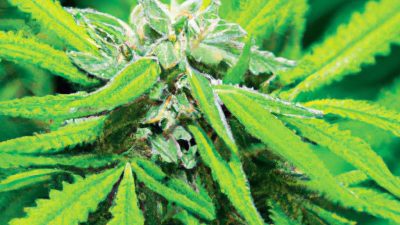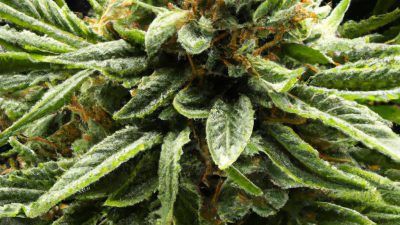
Filtration Methods to Improve Extract Clarity in Cannabis Processing
Cannabis extraction has revolutionized the way we consume and experience this versatile plant,allowing consumers and producers alike to access concentrated forms of cannabinoids and terpenes. However, the quality of cannabis extracts heavily depends on clarity, purity, and consistency. Filtration methods play a pivotal role in achieving these qualities by removing impurities, unwanted particulates, and residual plant matter from the final product.
in this article, we’ll explore the most effective filtration methods to improve cannabis extract clarity, how they fit into the broader scope of cannabis processing technology, and practical tips for optimizing your extraction workflow.
Why Extract Clarity Matters in Cannabis
Extract clarity isn’t just an aesthetic preference; it reflects the quality and purity of the cannabis concentrate.Clear extracts usually indicate:
- Fewer impurities: Minimal residual plant material, lipids, waxes, and chlorophyll.
- Better flavour and aroma: Clear extracts retain terpenes better, offering a richer sensory profile.
- Higher potency: Removal of non-active substances increases cannabinoid concentration per volume.
- Improved stability: Cleaner extracts tend to have a longer shelf life and resist degradation.
Overview of Cannabis Extraction and Post-Processing
Extracts are typically produced using methods such as CO2 extraction, butane or propane extraction (BHO/PHO), or ethanol extraction. After extraction, the raw concentrate contains plant residues, waxes, fats, and pigments which cloud the extract.
Post-processing techniques, including filtration, dewaxing, winterization, and chromatography, are applied to purify the extract and improve clarity.
Top Filtration Methods to Improve Cannabis Extract Clarity
1.Stainless Steel or mesh Screen Filtration
This is the first line of defense used immediately after extraction to remove large particulates such as flower fragments, seeds, or stems.
- How it works: The crude extract passes through a fine mesh screen or sieve that filters out insoluble solids.
- Benefits: Simple, inexpensive, and rapid; prepares the extract for more refined filtration steps.
- Limitations: Only removes large solids, not lipids or dissolved impurities.
2. Winterization and Cold Filtration
Winterization is essential to eliminate waxes, fats, and lipids that cloud extracts, especially in ethanol-extracted cannabis concentrates.
- Process: The crude extract is mixed with ethanol and chilled to -20°C or lower to precipitate waxes and lipids.
- Filtration: The cold slurry is then filtered using vacuum filtration apparatus or Buchner funnels lined with filter paper.
- Outcome: A clear, wax-free solution that enhances clarity and taste.
3. Filter Presses
Filter presses are industrial-grade filtration units that efficiently separate fine particulates and residual plant matter after winterization.
- How it effectively works: slurry is pumped into pressurized chambers with filter plates fitted with filter cloths.
- Advantages: High throughput, consistent filtration, and reusable filter media.
- Best for: medium to large scale extraction operations.
4. Depth Filtration (Cartridge or Pad Filters)
Depth filters use multiple layers of mixed media (e.g., cellulose, diatomaceous earth) to trap fine particles deep inside the filter material.
- Application: Post-winterization or pre-final filtration step to polish extracts.
- Benefits: High dirt holding capacity and effective removal of micro-particulates.
- Typical pore sizes: Range from 0.45 microns to 5 microns depending on clarity goals.
5. polishing Filtration: Membrane Filters and Sterilizing Filters
For the highest clarity and purity, especially for vape cartridges and tinctures, polishing with membrane filters is critical.
- Membrane filtration: Uses ultrafiltration or microfiltration membranes to remove the smallest impurities and bacteria.
- Typical pore size: Down to 0.2 microns for sterilization-grade filtration.
- Outcome: Crystal clear extract with extended shelf life and improved safety.
Comparison of Common Filtration Methods
| Filtration Method | Target Impurities | Typical Pore size | Best For | Scale |
|---|---|---|---|---|
| Mesh Screen Filtration | large particulates | 500+ microns | First crude clean-up | Small & Large |
| Winterization & Cold Filtration | Waxes, lipids | 10-50 microns | Ethanol extracts | Small & medium |
| Filter Press | Fine plant debris | 5-20 microns | Industrial scale | Medium & Large |
| Depth Filtration | Fine particulates | 0.5-5 microns | Polishing post-winterization | Small & Medium |
| Membrane Filtration | Microorganisms & fine solids | 0.2 microns or less | Final polish, sterilization | Small to Large |
Benefits of Using Advanced Filtration in Cannabis Post-Processing
- Enhances consumer experience: Clear, pure extracts offer better flavor, aroma, and potency.
- Compliance and safety: Filtration removes bio-contaminants and residual solvents to meet regulatory standards.
- Extended shelf life: Removing waxes and lipids reduces oxidation and degradation.
- Better process efficiency: Clean extracts are easier to handle and formulate into products.
Practical Tips for Optimizing Filtration in Cannabis Extraction
- maintain equipment cleanliness: Always sanitize filtration equipment to avoid microbial contamination.
- choose appropriate pore sizes: use multi-step filtration with progressively finer filters to minimize clogging.
- Control temperature: Cold filtration and winterization work best at sub-zero temperatures.
- Use high-quality filter media: Invest in FDA-approved materials suitable for cannabis extracts.
- Test and monitor: Regularly analyze extract clarity and potency to adapt filtration protocols.
Case Study: Improving Extract Clarity with Multi-Step Filtration
A mid-sized cannabis extraction facility implemented the following filtration workflow:
- Initial mesh screen filtration post-extraction to remove plant debris.
- Winterization with ethanol at -40°C followed by vacuum filtration to eliminate waxes.
- Filter press filtration to remove fine particulates at industrial scale.
- Final polishing through 0.2-micron membrane filters to achieve sterilization.
Result: The extracts achieved a crystal-clear appearance with superior flavor retention and passed all microbial and residual solvent testing. Patient feedback showed increased satisfaction with the products’ purity and smoothness.
Conclusion
Filtration methods are an indispensable aspect of cannabis post-processing that significantly impact extract clarity, quality, and consumer safety. From simple mesh screens to advanced membrane filters, selecting and combining appropriate filtration techniques can elevate your concentrate products to professional-grade purity and appeal.
Whether you’re a craft extractor or a large-scale producer, understanding and optimizing filtration methods will ensure your cannabis extracts not only look great but deliver maximum potency and flavor – crucial factors for success in today’s competitive cannabis market.
Want to learn more about cannabis extraction technology and advanced post-processing techniques? Stay tuned to our blog for the latest insights and equipment reviews!





